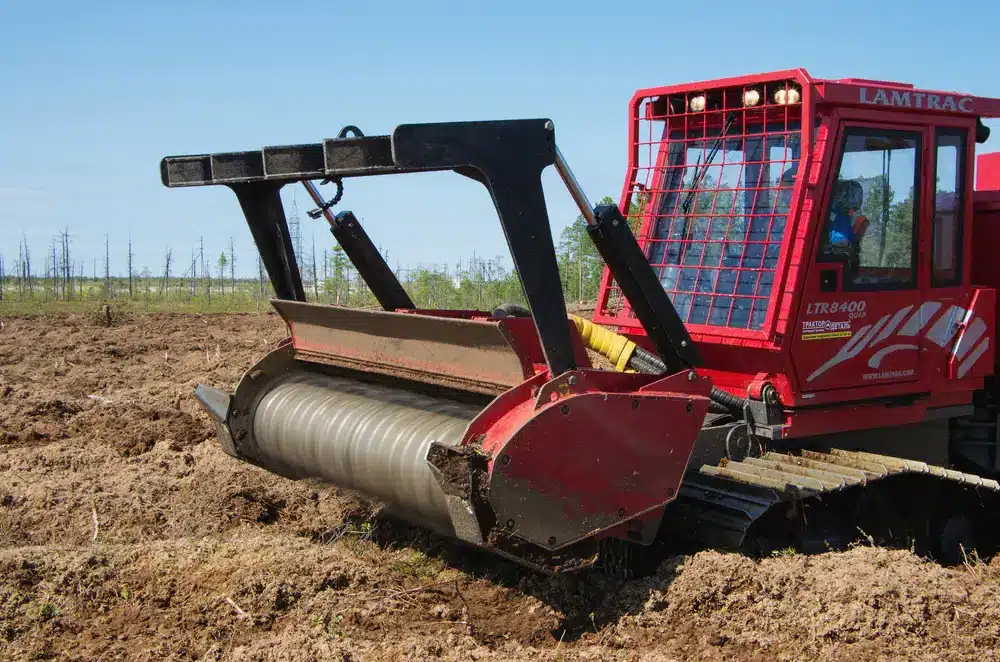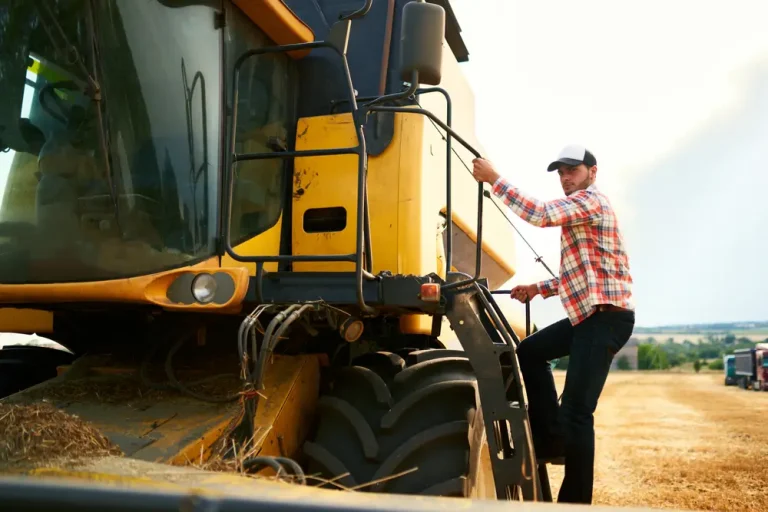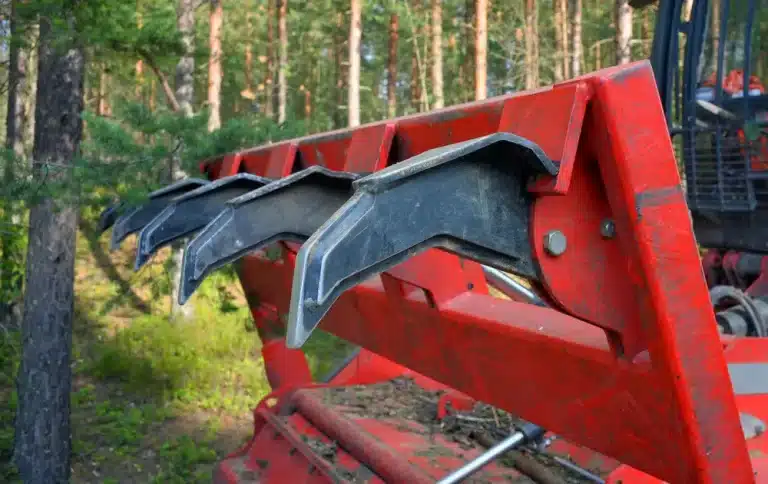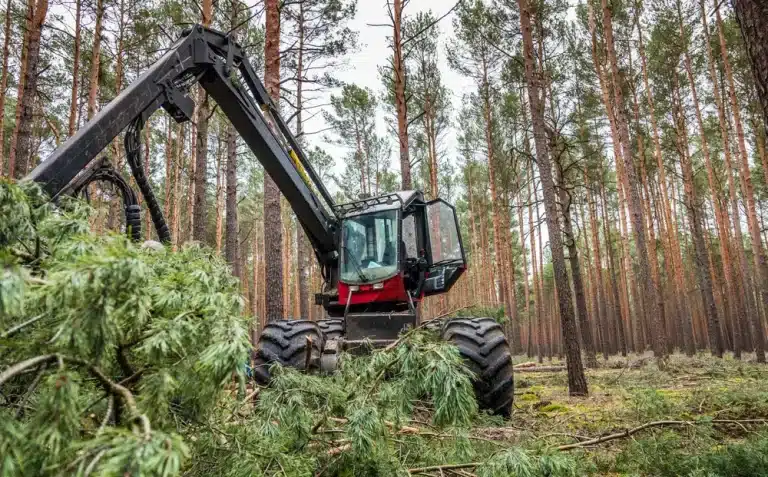Did you know that the rocky terrain and varied plant life surrounding Toulouse require specialized mulching technology for efficient land clearing? Selecting a fixed rotor versus a swinging rotor mulcher is not just a technical choice–it can mean the difference for efficiency, safety and ecosystem health in southwest France. This post breaks down both technologies, guiding you towards the ideal choice for Toulouse’s specific agricultural and forestry requirements. So, without further ado – let’s dig in!
Rotor technologies overview
Rotor tech in mulchers defines the manner in which the machine slices, shreds, or pulverizes material. Fixed-tooth rotors have hardened teeth fixed in position. They’re most effective for hard work—imagine heavy brush, compacted root systems, or minerally soil. These rotors don’t rotate or swing. They maintain a constant angle, typically 20°–35°, for powerful, forward strikes. Stationary rotors require additional horsepower to maintain their velocity and impact. This is logical in dry, hard or rocky soil, where power and durability dominate. Fixed rotors frequently employ titanium alloy or aluminum with additional coating layers such as polyurethane or aluminum oxide to prevent rust and wear.
Swinging hammer rotors, conversely, employ swinging or pivoting blades. This allows them to absorb impact from rocks or hard stumps without snapping. The blades fold back upon impact with a hard object, hence more durable and less likely to jam. Swinging rotors are more efficient. They’re lighter, and the rotating blades help you continue to move over soft, green or wet terrain. Their angles are typically lower, only 7° – 9°, which allows the blades to ride atop softer dirt and dense grass. Swinging rotors can assume multiple tube sizes and shapes, so they’re adaptable to various tasks and materials. They may require longer run times and can accommodate a smaller number of tubes per run. They can disperse bands more effectively when separating by size or weight.
Some units utilize unique rotors, such as zonal or elutriation variety, to randomly transport particles through a combination of mechanical energy and fluid velocity. Zonal rotors allow you to load samples as a stream, which is much quicker and accommodates larger loads. Rotor geometry affects particle trajectories, deposition and ring formation. The choice depends on what you need: fixed for speed and power, swinging for flexibility and softer ground.
Operational principles
Fixed-tooth rotors maintain a consistent cut, providing a finer, uniform mulch. Their teeth remain embedded, so they grind wood and debris each rotation. This means they’re good for big logs, thick stumps, and dense brush. The fixed teeth can penetrate deep into hard stacks and deliver a clean cut. If you have to clear land with lots of big trees or want a uniform mulch, fixed rotors work best. They return more shock to the machine when they strike rocks or metal, which can prematurely wear parts.
Swinging hammer rotors operate differently. Each hammer pivots, so when striking an unyielding object it swings back. This reduces impact and assists in preserving the rotor’s structural integrity. These rotors take on light brush, grass and thin branches with ease. They don’t chop up large logs as well as stationary rotors, but they are much less likely to snap or bend if they hit hidden rebar or rocks. This makes them a safer choice for ground littered with mystery debris. Their mulch is rougher and less uniform, however the machine usually lasts longer.
Rotor design affects your fuel consumption and tractor loading. Fixed rotors, like those used with Bite Limiter systems, can assist low power tractors by preventing deep bites that bog down the rotor. Swinging rotors tax the drive less but they can consume more fuel when pulverizing dense heaps.
Centrifugal force expels debris from the spinning rotor, while fluid flow suction can draw it back. The equilibrium of these forces, as well as the size and mass of what’s being mulched, alters the effectiveness of the rotor. Fixed rotors typically have a larger angle, so debris travels laterally, whereas swinging rotors allow buckets to swing up to a full 90°, which can propel debris a greater distance.
Application scenarios
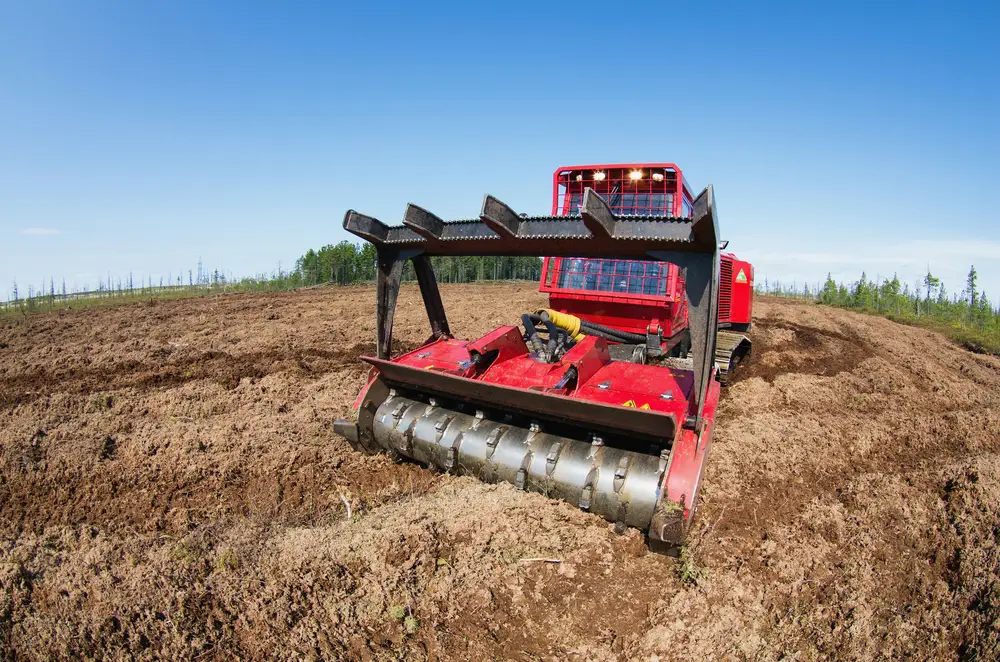
Mulchers have different rotor configurations, and each is suited for particular work. Fixed-tooth rotors are ideally suited for demanding fieldwork. These machines can easily remove large trees, stumps and brush. They utilize them extensively for fire suppression, trail creation, or clearing areas for roads. The teeth remain stationary, therefore they slice through brush and wood debris instead of tearing it, without energy loss. This layout allows them to tackle strenuous tasks and maintain top velocity, even in rocky terrain. For instance, clearing a firebreak or pulling old tree stumps is simpler with a fixed-tooth rotor because it can handle hard wood and dense roots.
Swinging hammer rotors are more suited to farm or orchard work, such as cleaning up vineyards or fruit groves. Because the swinging hammers move with the ground, they perform better in uneven terrain or areas with rocks, small debris or loose soil. They don’t clog up as much and are easy on the dirt. This makes them a surefire favorite for locations that require consistent maintenance, but not trimming or heavy clearing. Many vineyard owners employ them to trim grass and small branches between rows, maintaining the land while avoiding crop damage.
Hybrid or switch-able rotor mulchers suit places that require both. These are excellent for ground that transitions from open field to orchard or has a combination of heavy brush and lighter plants. The user can toggle between fixed and swinging rotor options per the task. This saves time and money for people who battle mixed terrain.
Below is a table that shows how different rotor types match certain jobs and field needs:
| Rotor Type | Best Use Cases | Operation Detail |
| Fixed-tooth | Fire lines, trail prep, big stumps/trees | High force, stable angle, handles tough spots |
| Swinging hammer | Vineyards, orchards, rocky/uneven ground | Flexible, less clogging, gentle on surface |
| Hybrid/interchange | Mixed-use, changing landscapes | Can swap rotors to fit new needs |
Key benefits
Fixed rotor mulchers are known for their high output per hour. They slice through heavy brush and thick wood quick, due to their stiff teeth. This sturdy configuration puts out a sleek mulch with a consistent appearance, something that is typically required in industrial land clearing or large-scale logging projects. Fixed rotors can rotate at higher speeds. This velocity combined with their robust construction translates into enhanced grinding of hard material and a tidier grind. In serious work where man-hours and a clean finish count, fixed rotors are the best choice.
Swinging rotor mulchers employ flexible hammers that can swing back if they encounter rocks or dense materials. This minimizes the possibility of snapping parts off on coarse or uncharted terrain. It implies that less electricity is required to operate them. That enables smaller tractors to deploy these mulchers, reducing fuel consumption and expenses. Swinging rotors are convenient to manipulate for small, everyday jobs such as clearing grass or dirt from trails or parks.
Fixed rotors can accommodate more teeth, they can tackle larger work and traverse large plots faster. They do require additional power, thus they are ideally suited for larger devices. Fixed rotors are frequently employed when high force and a fine mulch is necessary, as in land clearing for farming or new construction.
Swinging rotors are easier to adjust in everyday life. They accommodate multiple blade types and work with various tube diameters and forms. That makes them great for tasks that require a little more finesse, such as clearing around rocks or in uneven terrain. Their shape assists when sifting material by size, as is the case in certain dirt or crop labor.
Selection criteria
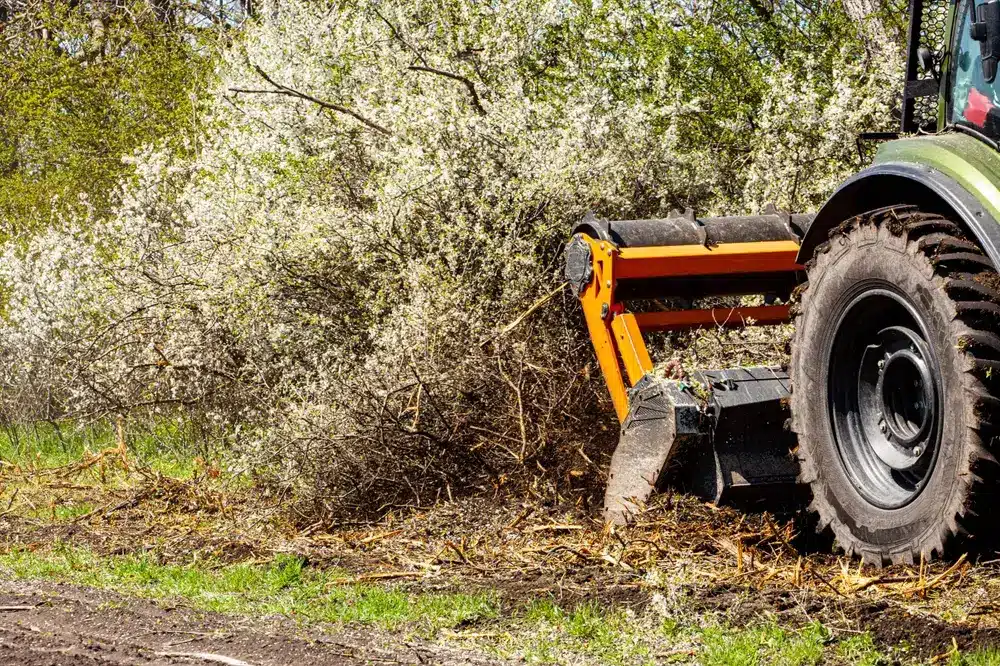
Selecting between fixed rotor and swinging rotor mulchers boils down to a couple of straightforward considerations. Always begin with what is most important for your work and equipment. The list below breaks down the key things to check before picking a rotor:
- Tractor horsepower
- Type of work and mulch quality needed
- Daily working hours
- Ease of future maintenance
- Spare part availability
- Sample volume and speed range (for centrifuge context)
- Desired g-force and K factor
- Rotor category: swinging-bucket, fixed-angle, or vertical
Align rotor type with your tractor’s horsepower. Fixed rotors are most effective when used with high-horsepower tractors, typically exceeding 110 kW. They’ll chew through tough brush and dense wood. Swinging rotors fit smaller tractors with less power, say under 75 kW, and are ideal for softer vegetation or lighter work. If your work requires long days, fixed rotors perform better for heavy, non-stop use. Swinging rotors are great for quick shifts or when the machine halts frequently.
Consider mulch excellence. Fixed rotors cut wood into finer, more uniform mulch, which is ideal for landscaping or compost. Swinging rotors tear up stuff less, but when you don’t need a high finish they clear ground faster. This counts if you want butter-like mulch, or just want to clean a site fast.
Maintenance and parts are important as well. Fixed rotors contain more moving bits, and may cost more to repair. Ensure spare parts are readily available. Swinging rotors have less fixed components so they’re often less expensive to maintain, but see if parts are common in your region.
For centrifuge rotors, consider the separation you desire. Swinging-bucket rotors provide long pathlengths, ideal for rate-zonal separations or large samples at low speed. Fixed-angle rotors require high g-force and minor K factor if you want to pellet speed. Vertical rotors have the smallest K factor, therefore they complete runs quickly and with short pellet paths.
Maintenance essentials
Each mulcher, pin rotor or flail rotor, requires consistent maintenance to perform well and live a long life. Neglecting maintenance eliminates time in the field and can result in catastrophic failures. A quality checklist keeps operators on the right steps, every time. First, always inspect and replace the filter at predetermined intervals. This allows the rotor to spin optimally and keeps debris out. Operators need to torque all bolts & nuts frequently. Loose fasteners generate more vibration, which wears out parts quickly and can throw the entire rotor out of alignment. Just checking rotor alignment is a must. If the rotor sits off-center, it leads to uneven wear on bearings and the driveline. This means additional downtime and expensive repairs.
Have spare teeth and the proper tools on hand. Having our wearable mulcher teeth changed on location keeps the mulcher working and eliminates waiting for wearing parts. Spare teeth can go a long way, especially out in the field. Pilots should inspect the rotor’s face. Most rotors are shielded with a layer of protection, such as a polyurethane on titanium alloys or a specialized oxide coating on aluminum. These shields battle off rust and abrasion. These layers have to be inspected for chips or cracks that can propagate. Cleaning and occasionally oiling the rotor keeps grit from accumulating and reduces wear. What and how much care a rotor requires varies based on its composition and workload. Others require more diligent maintenance or specialty oils.
Missing these steps risks bad mulcher output, harm, and even total equipment breakdown. A clean rotor spins longer, provides more power, and saves you money.
